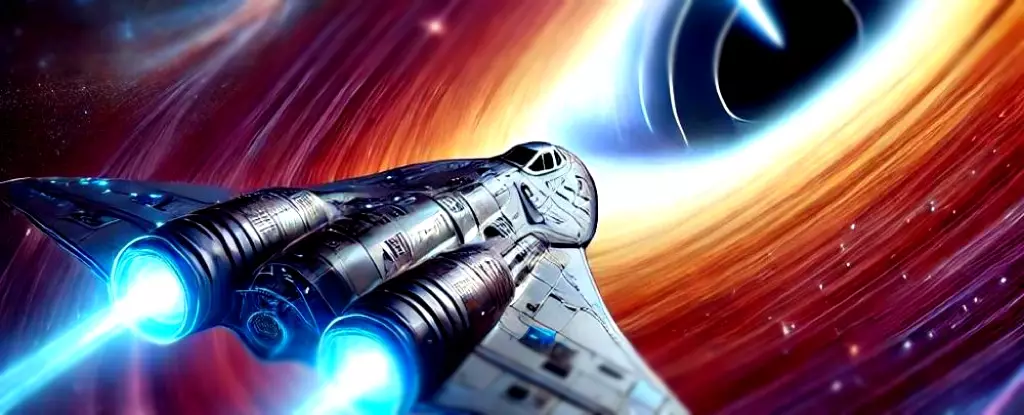The idea of warp drives has been a prevalent concept in science fiction for decades, with Star Trek popularizing the notion of superluminal travel through hyperspace. The theoretical concept behind warp drives involves creating a bubble that allows a spaceship to slip through space at faster-than-light speeds. This would enable the spacecraft to traverse vast distances in the universe in a relatively short amount of time. However, the feasibility of warp drives in reality is still a subject of debate among researchers due to the immense amount of energy required to generate a warp field.
Recent research conducted by Remo Garattini and Kirill Zatrimaylov delves into the intriguing intersection of warp drives and black holes. The study explores the possibility of a ship equipped with a warp drive surviving inside a Schwarzschild black hole, provided it crosses the event horizon at a speed lower than that of light. The gravitational field of the black hole could potentially reduce the negative energy required to sustain the warp drive, making it theoretically possible for the ship to navigate through the black hole without being crushed. The implications of this research suggest that mini-warp drives could someday be created in laboratory settings.
Black holes, known for their intense gravitational pull that not even light can escape, serve as the backdrop for the theoretical exploration of warp drives. The specifics of the study focus on Schwarzschild black holes, which are characterized by their static nature and non-rotating properties. These black holes provide a valuable framework for understanding the interaction between warp drives and gravitational forces. By combining the equations governing black holes and warp drives, researchers were able to uncover the potential for embedding the warp drive in the outer region of the black hole.
While the research offers intriguing possibilities for the future development of warp technology, significant challenges remain. The generation of negative energy necessary for warp field generation poses a significant obstacle, as current energy capabilities may not be sufficient to power a functional warp drive. Furthermore, the theoretical implications of warp bubbles interacting with black holes raise questions about the thermodynamic aspects of such interactions.
The exploration of warp drives in the vicinity of black holes opens up a realm of possibilities for future research and technological advancements. While the concept of traversing the universe at faster-than-light speeds remains speculative at this point, the theoretical groundwork laid by researchers like Garattini and Zatrimaylov offers a glimpse into the potential capabilities of warp technology. As our understanding of quantum mechanics and gravitational forces continues to evolve, the realization of warp drives may not be as far-fetched as once believed.


Leave a Reply